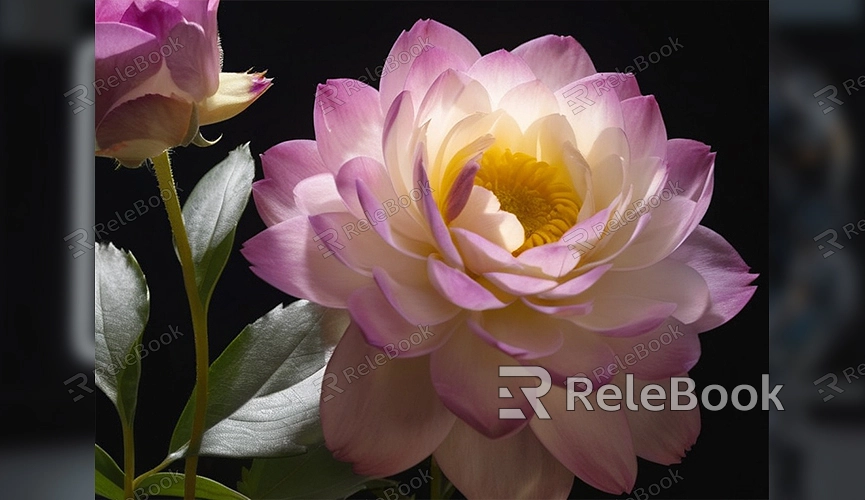How to Render HDRI with Blender Default HDRI 2.8
When it comes to high-quality rendering in Blender, HDRI (High Dynamic Range Imaging) is a crucial technique. HDRI can provide natural lighting and realistic environmental reflections for your 3D scenes, significantly enhancing your render results. In Blender 2.8, you can use the default HDRI resources to quickly achieve excellent rendering outcomes. This guide will walk you through the process of rendering with Blender 2.8’s default HDRI and provide practical tips for optimizing your render results.
Understanding the Importance of HDRI
HDRI images contain more lighting information than standard images, allowing them to simulate real-world ambient lighting. By using HDRI, you can create more realistic lighting and environmental reflections in your scene, enhancing the visual appeal of your 3D models. Blender 2.8 makes it easy to use built-in HDRI resources for high-quality rendering.

Steps to Render with Blender 2.8 Default HDRI
1. Open Blender and Prepare the Scene
- Launch Blender 2.8 and start a new project or open an existing one. Ensure you have set up the 3D models and scene you want to render.
2. Choose the Render Engine
- Blender 2.8 offers two main rendering engines—Cycles and Eevee. Cycles is a ray-tracing-based engine suitable for high-quality renders, while Eevee is a real-time rendering engine ideal for quick previews. Choose the appropriate render engine for your needs from the “Render Properties” panel.
3. Set Up HDRI Environment
- Go to the “World” panel in Blender, find the “Color” option, and select “Environment Texture” as the background type. Click the “Open” button and select one of Blender 2.8’s default HDRI images. Blender 2.8 includes several default HDRI images that provide natural lighting and environmental reflections for your scene.
4. Adjust HDRI Intensity
- In the “World” panel, you will see an “Intensity” slider. Adjust this slider to change the intensity of the HDRI lighting in your scene. Properly adjusting the intensity ensures that the lighting effects are natural and avoids overexposure or underexposure. Generally, setting the HDRI intensity between 1 and 2 works well, but you may need to fine-tune this based on your scene.
5. Adjust HDRI Rotation
- To make the lighting effects suit your needs, you can adjust the rotation of the HDRI. In the “World” panel, find the “Texture Coordinate” section and use the “Rotation” option to change the direction of the HDRI. Rotating the HDRI allows you to adjust the position of the light source, which affects the shadows and reflections in the scene.
6. Render and Check Results
- Once you have made the necessary adjustments, click the “Render” button to start rendering your scene. After rendering is complete, examine the image to ensure that the lighting and reflection effects meet your expectations. If needed, you can return to the settings to further adjust the HDRI’s intensity and rotation until you achieve the desired result.
Tips for Optimizing Render Quality
- Use Appropriate Sampling Settings: In the Cycles render engine, increasing the sampling value can improve image quality but also lengthen render time. Set a suitable sampling value based on your needs to balance quality and speed.
- Add Additional Light Sources: While HDRI provides natural ambient lighting, you might need to add extra light sources to enhance scene details and brightness in some cases.
- Post-Processing: After rendering, use Blender’s compositor for post-processing, such as adjusting brightness, contrast, and color, to further refine the render results.
Using high-quality HDRI and texture resources can significantly improve your work during creation and rendering. For high-quality 3D textures and HDRIs, you can download them for free from [Relebook](https://textures.relebook.com/). If you need exquisite 3D models, visit [Relebook](https://3dmodels.relebook.com/) for a wide range of premium resources. These assets will help you better refine and optimize your render results.
Rendering with the default HDRI in Blender 2.8 is a simple yet effective method for providing natural lighting and realistic environmental reflections in your 3D scenes. By properly adjusting HDRI intensity and rotation, combined with suitable render engine settings and optimization tips, you can achieve satisfying render results. We hope this guide helps you master the techniques of using Blender’s default HDRI for rendering and enhances your 3D creations. Whether for game development or animation production, high-quality rendering is key to elevating your work’s quality.

